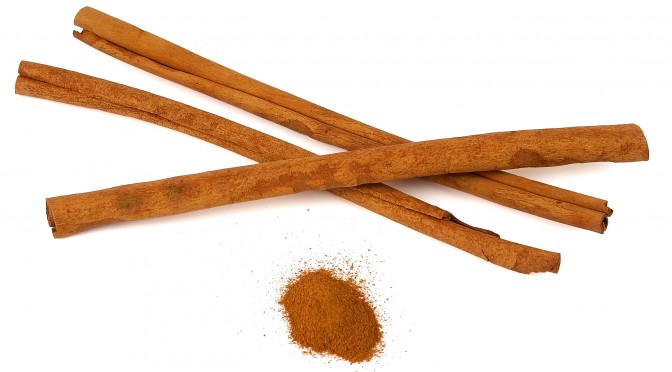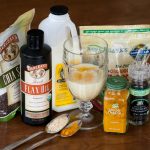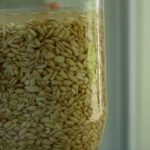PROANTHOCYANIDINS AND PROCYANIDINS IN FOODS
Contents
Proanthocyanidins in foods
The interest on proanthocyanidins, and their content in foods, has increased as a result of the discovery, due to clinical and laboratory studies, of their anti-infectious, anti-inflammatory, cardioprotective and anticarcinogenic properties. These protective effects have been attributed to their ability to:
- act as free radical scavenger;
- inhibit lipid peroxidation;
- act on various protein targets within the cell, modulating their activity.
Proanthocyanidins in different foods vary greatly in terms of:
- total content;
- distribution of oligomers and polymers;
- constituent catechin units and bonds between units.
In some foods, such as black beans and cashew nuts, only dimers are present, whereas in most of the foods proanthocyanidins are found in a wide range of polymerizations, from 2 to 10 units or more.
Foods with the highest proanthocyanidin content are cinnamon and sorghum, which contain respectively about 8000 and up to 4000 mg/100 g of fresh weight (FW); grape seeds (Vitis vinifera) are another rich source, with a content of about 3500 mg/100 g dry weight.
Other important sources are fruits and berries, some legumes (peas and beans), red wine and to a less extent beer, hazelnuts, pistachios, almonds, walnuts and cocoa.
The coffee is not a good source.
Proanthocyanidins are not detectable in the majority of vegetables; they have been found in small concentrations in Indian pumpkin. They are not detectable also in maize, rice and wheat, while there are present in barley.
A-type procyanidins in foods

Although many food plants contain high amounts of proanthocyanidins, only a few, such as plums, avocados, peanuts or cinnamon, contain A-type procyanidins, and none in amounts equal to cranberries (Vacciniun macrocarpon).
Note: A-type procyanidins exhibit, in vitro, a capacity of inhibition of P-fimbriatedEscherichia coli adhesion to uroepithelial cells greater than B-type procyanidins (adhesion represents the initial step of urogenital infections).
B-type procyanidins in foods

B-type procyanidins, consisting of catechin and/or epicatechin as constituent units, are the exclusive proanthocyanidins in at least 20 kinds of foods including blueberries (Vaccinium myrtillus), blackberries, marion berries, choke berries, grape seeds, apples, peaches, pears, nectarines, kiwi, mango, dates, bananas, Indian pumpkin, sorghum, barley, black eye peas, beans blacks, walnuts and cashews.
Proanthocyanidins in fruits
In the Western diet, fruit is the most important source ofproanthocyanidins.
- The major sources are some berries (blueberries, cranberries, and black currant) and plums (prunes), with a content of about 200 mg/100 g FW.
- Intermediate sources are apples, chokeberries, strawberries, and green and red grapes (60-90 mg/100 g FW).
- In other fruits the content is less than 40 mg/100 g FW.
In fruit, the most common proanthocyanidins are tetramers, hexamers, and polymers.
Good sources of proanthocyanidins are also some fruit juices.
Proanthocyanidins in grape seeds
A particularly rich source of proanthocyanidins is the seeds of grape.
Proanthocyanidins in grape seeds are only B-type procyanidins, for the most part present in the form of dimers, trimers and highly polymerized oligomers.
Grape seed proanthocyanidins are potent antioxidants and free radical scavenger, being the more effective either than vitamin E and vitamin C (ascorbic acid).
In vivo and in vitro experiments support the idea thatproanthocyanidins, and in particular those from grape seeds, can act as anti-carcinogenic agents; it seems that they are involved, in cancer cells, in:
- reduction of cell proliferation;
- increase of apoptosis;
- cell cycle arrest;
- modulation of the expression and activity of NF-kB and NF-kB target genes.
References
de la Rosa L.A., Alvarez-Parrilla E., Gonzàlez-Aguilar G.A. Fruit and vegetable phytochemicals: chemistry, nutritional value, and stability. 1th Edition. Wiley J. & Sons, Inc., Publication, 2010
Gu L., Kelm M.A., Hammerstone J.F., Beecher G., Holden J., Haytowitz D., Gebhardt S., and Prior R.L. Concentrations of proanthocyanidins in common foods and estimations of normal consumption. J Nutr 2004;134(3):613-617 [Abstract]
Han X., Shen T. and Lou H. Dietary polyphenols and their biological significance. Int J Mol Sci 2007;9:950-988 [Abstract]
Manach C., Scalbert A., Morand C., Rémésy C., and Jime´nez L. Polyphenols: food sources and bioavailability. Am J Clin Nutr 2004;79(5):727-47 [Abstract]
Nandakumar V., Singh T., and Katiyar S.K. Multi-targeted prevention and therapy of cancer by proanthocyanidins. Cancer Lett 2008;269(2):378-387 [Abstract]
Ottaviani J.I., Kwik-Uribe C., Keen C.L., and Schroeter H. Intake of dietary procyanidins does not contribute to the pool of circulating flavanols in humans. Am J Clin Nutr 2012;95:851-8 [Abstract]
Santos-Buelga C. and Scalbert A. Proanthocyanidins and tannin-like compounds: nature, occurrence, dietary intake and effects on nutrition and health. J Sci Food Agr 2000;80(7):1094-1117[Abstract]
Tsao R. Chemistry and biochemistry of dietary polyphenols. Nutrients 2010;2:1231-1246 [Abstract]
Wang Y.,Chung S., Song W.O., and Chun O.K. Estimation of daily proanthocyanidin intake and major food sources in the U.S. diet. J Nutr 2011;141(3):447-452 [Abstract]
http://www.tuscany-diet.net/2014/03/14/proanthocyanidins-procyanidins-foods/
Distribution in plants
Proanthocyanidins, including the lesser bioactive and bioavailable polymers (four or more catechins) represent a group of condensed flavan-3-ols, such as procyanidins, prodelphinidins and propelargonidins, that can be found in many plants, most notably apples, maritime pine bark and that of most other pine species, cinnamon,[2] aronia fruit, cocoa beans, grape seed, grape skin (procyanidins and prodelphinidins),[3] and red wines of Vitis vinifera (the European wine grape). However, bilberry, cranberry, black currant, green tea, black tea, and other plants also contain these flavonoids. Cocoa beans contain the highest concentrations.[4] Proanthocyanidins also may be isolated from Quercus petraea and Q. robur heartwood (wine barrel oaks).[5]Açaí oil, obtained from the fruit of the açaí palm (Euterpe oleracea), is rich in numerous procyanidin oligomers.[6]
Apples contain on average per serving about eight times the amount of proanthocyanidin found in wine, with some of the highest amounts found in the Red Delicious and Granny Smithvarieties.[7]
An extract of maritime pine bark called Pycnogenol bears 65-75 percent proanthocyanidins (procyanidins).[8] Thus a 100 mg serving would contain 65 to 75 mg of proanthocyanidins (procyanidins).
Oligomeric proanthocyanidins
Oligomeric proanthocyanidins (OPC) strictly refer to dimer and trimer polymerizations of catechins. OPCs are found in most plants and thus are common in the human diet. Especially theskin, seeds, and seed coats of plants contain large amounts of OPCs.[citation needed] They are dense in grape seeds and skin, and therefore in red wine and grape seed extract, cocoa, nuts and all Prunus fruits (most concentrated in the skin), and in the bark of Cinnamomum (cinnamon)[2] and Pinus pinaster (formerly known as Pinus maritima), along with many other pine species. OPCs also can be found in blueberries, cranberries (notably procyanidin A2),[23] aronia,[24] hawthorn, rosehip, and sea buckthorn.[25]
Oligomeric proanthocyanidins can be extracted via Vaccinium pahalae from in vitro cell culture.[26] The US Department of Agriculture maintains a database of botanical and food sources of proanthocyanidins.[4]
https://en.wikipedia.org/wiki/Proanthocyanidin
http://www.tuscany-diet.net/2014/03/14/proanthocyanidins-procyanidins-foods/






